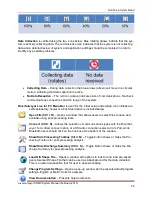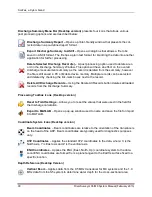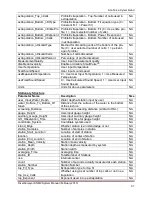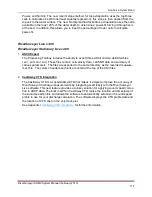
SonTek, a Xylem brand
RiverSurveyor S5/M9 System Manual (February 2013)
103
b) Select the Applications Icon to open an additional list of Programs
c) Select Bluetooth and then Bluetooth Manager
d) Select option 6, Settings
e) Use arrow keys to activate Bluetooth
e. If Bluetooth or other issues persist, there are two ways to reset the mobile device
a) If the phone is on:
1. Press
Start
2. Scroll to and Select
System Tools
3. Scroll to and Select either
Master Reset
or
Master Clear
4. Press
Yes
(Left Soft Key) when Alert appears
5. Enter Master Code (normally 000000)
b) If the phone is off or frozen:
1. Press and Hold the Center Select Key, while powering up the phone
or
Press and Hold the Z & E keys, while powering up the phone
2. The MASTER RESET screen will appear
3. Press Yes
4. This will restore the phone to factory settings
6. GPS
a. Be sure the GPS antenna(s) have a clear view to the sky. Large trees or structures like
bridges and buildings nearby can obstruct the satellite signals. Move away from any
over-head obstructions to avoid multi-path errors or GPS dropouts.
b. The GPS antenna on the ADP should be connected to the PCM with the coaxial cable.
c. GPS Quality
a) Zero is no GPS fix
b) One is a non-differential GPS fix
c) Two is a differential GPS (DGPS) fix
d) Four is an RTK fixed integer condition. This is the best option. It indicates that
both GPS receivers are locked on the same satellites.
e) Five is an RTK float integer condition. This indicates a “float” condition where the
data quality is between the SonTek DGPS and SonTek RTK because both GPS
receivers are not locked on the exact same satellites. It is expected that this condi-
tion, if present, will be temporary (could last several minutes, but generally less
than one hour) as the GPS receiver will eventually lock on either the DGPS or the
RTK and will not remain in this “float” condition too long.
d. GPS HDOP
a) Horizontal Dilution of Precision is a GPS term used to describe the geometric
strength of satellite configuration on GPS accuracy.
b) Table 4 describes the possible values






























